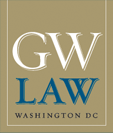Document Type
Article
Publication Date
2004
Status
Accepted
Abstract
In the wake of the Federal Circuit’s ruling in Knorr-Bremse Systeme Fuer Nutzfahrzeuge GmbH v. Dana Corp., this Article seeks to develop an economic theory of the functions that enhanced damages may serve in patent law specifically or litigation more generally as well as to explain the role that noninfringement opinions – opinions of counsel that conclude that activity will be noninfringing – could have within the context of such a theory. I consider the benefits and costs of a patent regime that generally provides enhanced damages but provides a safe harbor for potential infringers who acted only after receiving advice from counsel that their activity likely is noninfringing, and conclude that damages multipliers may help deter infringing activity and reduce the incidence of suit by reducing what otherwise might otherwise be a problem of underdeterrence.
Part I of this Article describes three theories of supercompensatory damages, including the theory that supercompensatory damages encourage consensual negotiation instead of nonconsensual takings. Part II introduces a formal simulation model to illustrate the effects of a regime that combines enhanced damages with a safe harbor for infringers who acted under the favorable advice of counsel. The simulation model incorporates genetic algorithms, which allow the players in a simple patent game (the potential infringer and the patentee) to learn optimal behavior given the rules of the legal regime and the simple goal of wealth maximization. Part III incorporates various alterations to the baseline simulation to test how changes in parties' information may affect the basic conclusions.
GW Paper Series
GWU Legal Studies Research Paper No. 2013-82; GWU Law School Public Law Research Paper No. 2013-82
SSRN Link
http://ssrn.com/abstract=2282565
Recommended Citation
Michael Abramowicz, A Unified Economic Theory of Noninfringement Opinions, 14 FED. CIR. B.J. 241 (2004).
